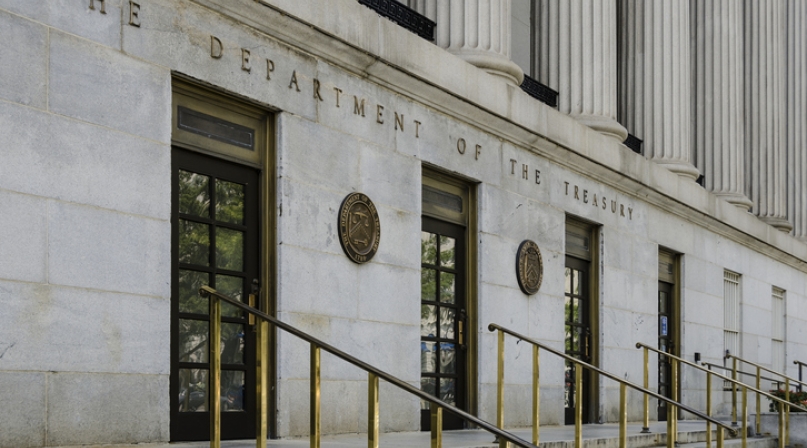Treasury Department publishes new guidance on the recoupment and reallocation of ERA program funds
Author
Upcoming Events
Related News

Key Takeaways
The Consolidated Appropriations Act of 2021, which established and appropriated $25 billion for the first round of the Emergency Rental Assistance program (ERA1), directed the U.S. Department of Treasury (Treasury) to recapture and reallocate “excess” ERA1 funds beginning on September 30, 2021. On October 4, Treasury published new guidance outlining how it plans to recoup and redistribute these funds, emphasizing that Treasury intends to direct ERA resources to grantees that have been successful in administering the program and to those areas with the highest need. The reallocation of ERA1 funds will impact all counties who are working to effectively administer the ERA program at the local level and to keep their residents safely and stably housed through the COVID-19 pandemic and beyond.
According to the guidance, Treasury will take the following approach to recapturing and reallocating “excess” ERA1 funds:
Definition of Obligated Funds
The Consolidated Appropriations Act of 2021 requires Treasury to identify any “excess” funds that have not yet been obligated by a grantee from their initial ERA1 allocation and to reallocate those funds to grantees that have obligated at least 65 percent. Obligated funds, as defined by Treasury in the new guidance, include those that:
- Have been spent to provide financial assistance or housing stability services
- Have been earmarked to pay for assistance promised in a commitment letter to a landlord in order to persuade them to enter into a rental agreement, as detailed in Treasury’s ERA FAQ #35
- Are needed to fulfil a contractual obligation in which assistance has been approved but not yet paid to a landlord or utility provider
Notably, as grantees may spend up to 10 percent of their ERA1 allocation on administrative costs, that percentage will automatically be considered as obligated by Treasury.
Grantees are required to submit an Obligated Funds Certification, detailing the amount of ERA1 funds obligated through September 30, 2021. Those grantees that have obligated less than 65 percent of their allocation by that date, or that do not submit a certification, will be required to submit a Program Improvement Plan to Treasury by November 15, 2021.
Identification of Excess Funds
In addition to the amount of funds obligated, Treasury will also assess grantees’ expenditure ratio every two months, beginning September 30, 2021. Treasury will determine a grantee’s expenditure ratio using the following calculation:
- The grantee’s total expenditure of ERA1 funds, as listed on interim and monthly reports to Treasury, divided by 90 percent of the grantee’s total ERA1 allocation.
If funds are recouped, the grantee’s total ERA1 allocation will be adjusted.
Treasury will conduct its ‘First Assessment’ of a grantee’s expenditure ratio using reporting data through September 30, 2021. Grantees’ whose expenditure ratio for the First Assessment is below 30 percent will be thought of as having excess funds. After the First Assessment, the minimum expenditure ratio will increase by 5 percent each month.
The amount of a grantees’ excess funds will be considered as the difference between:
- The amount of expenditures necessary for the grantee to achieve the minimum expenditure ratio; and
- The grantee’s total reported expenditures.
Treasury’s final assessment of grantees’ expenditure ratios will be based on data reported through March 31, 2022. Any remaining unobligated ERA1 funds identified by that date will be treated as excess funds.
Mitigating Factors for Excess Funds
There are three circumstances under which Treasury may reduce or not make a determination of excess funds, including if:
- There are exigent circumstances, such as a natural disaster;
- A grantee submits a certification stating that it has obligated at least 65 percent of its allocation, or that its expenditure ratio is at least 30 percent by November 15; or
- If Treasury approves a grantee’s Program Improvement Plan.
As stated above, grantees that have obligated less than 65 percent of their allocation by September 30, 2021, must submit a Program Improvement Plan to Treasury by November 15. If Treasury approves the plan, any reduction in the grantee’s excess funds determination may not exceed the amount of total assistance expenditures necessary for the expenditure ratio to equal 15 percent.
Returning Excess Funds to Treasury
If funds are deemed to be in excess following the First Assessment and each subsequent assessment, Treasury will notify a grantee in writing, providing instructions for the funds’ return. Grantees must return such funds within 10 days of receiving the notice.
Reallocation of Excess Funds
Grantees that have obligated at least 65 percent of their initial ERA1 allocation may begin to request access to recaptured funds beginning on October 15, 2021, using a form that will be provided by Treasury. Treasury will assess each request based on the grantee’s ability to meet and exceed the minimum expenditure ratio as well as the grantee’s jurisdictional need for additional ERA funds.
If the demand for reallocated funds exceeds the supply, each grantee’s share will be calculated by:
- Dividing the grantee’s approved reallocation request by the aggregate amount of requested reallocated funds approved by Treasury; and
- Multiplying this percentage by the total amount of funds available for distribution.
Treasury will also endeavor to reallocate recaptured funds from one grantee to another within the same state.
Further, while grantees must obligate all ERA1 funds from their initial allocation by September 30, 2022, those grantees who receive a reallocation may request an extension through December 29, 2022.
Voluntary Reallocation
Grantees can request to transfer some or all of their ERA1 reallocation to another grantee that administers an ERA1 program within the same state and has obligated at least 65 percent of its own allocation beginning September 30, 2021.
Administrative Expenses
Grantees may spend up to 10 percent of their initial ERA1 allocation on administrative expenses only if they have obligated at least 30 percent of that initial allocation for the provision of financial assistance and housing stability services by September 30, 2022. If they obligate less than 30 percent of their initial allocation for the provision of financial assistance and housing stability services, Treasury will conclude that the grantees administrative expenses were not attributable to these activities and, as such, were not permissible uses of ERA1 funds.
Additional Resources
Resource
Emergency Rental Assistance Resource Hub for Counties

Related News

Counties and Railroads: Shared Priorities for the Next Surface Transportation Bill
County leaders from across the country have a vital opportunity to ensure their infrastructure priorities are front and center.

House reintroduces bipartisan legislation to level playing field for rural communities
House reintroduced the Rural Partnership and Prosperity Act, bipartisan legislation intended to advance economic development in rural counties and overcome barriers to obtaining federal funding and resources.

Podcast: Eastern Tennessee counties invest in tourism during shutdown
Sevier County, Tenn. refused to let the government shutdown devastate its fall tourism draw—Great Smoky Mountains National Park. County Mayor Larry Waters describes the lengths he and his neighbors went to keep the park open. And NACo Chief Government Affairs Officer Mark Ritacco offers an outlook on what counties can take away from the shutdown and into the future.

